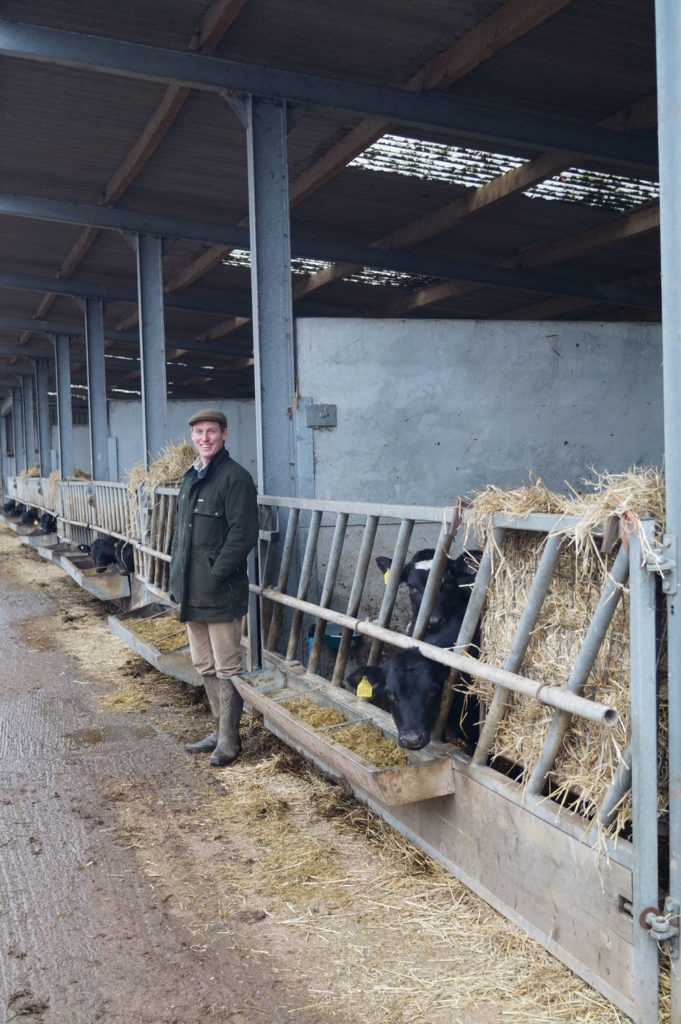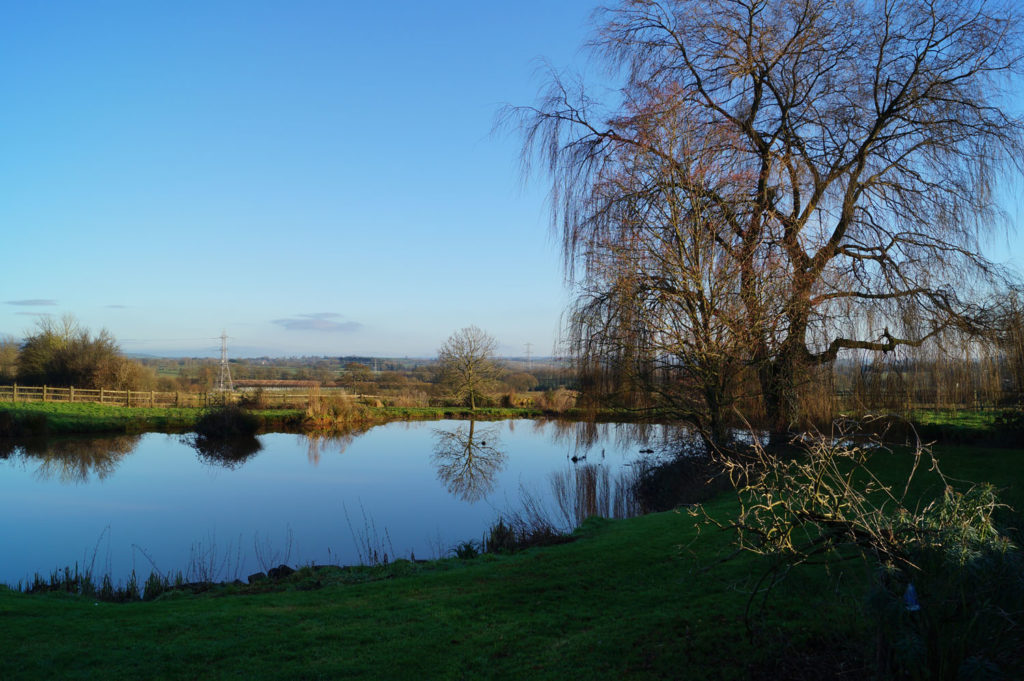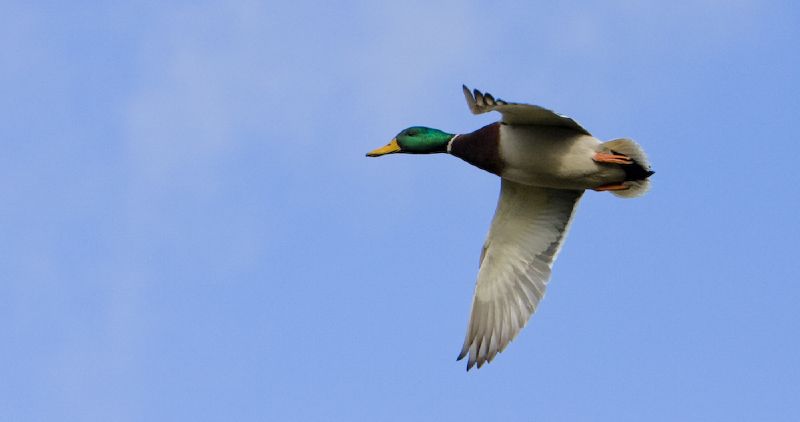Mark Chattey is a Devon beef farmer with a passion for creating wetlands

Mark Chattey is a beef farmer from Langford in East Devon. In the past 15 years, he has turned over 35 of his 284 acres to conservation (about 12 percent) and created 11 ponds on the farm. His inspiration comes from his family and his love of the natural world.
Farm facts
- Location: Devon
- Type of farming: Beef and arable
- Acreage: 284
- Percentage in conservation: 12
- Funding grants: Mid-tier, Forestry Commission, Environment Agency
He said: “I’m inspired by birdsong and the beauty and joy I get from walking round a more varied habitat. I was interested in nature from a young age and my dad set a good example creating the House Pond to encourage swans to nest. It’s also important to think about the next generation. Two years ago, I planted a 2.5-acre woodland to celebrate the birth of our daughter and named it Evelyn’s Copse after her.”
Evelyn’s Copse was made possible thanks to a Forestry Commission grant and Mark also received a payment from the EA to protect the stream running through the farm, which funded five miles of fencing to create his “conservation area”. Besides that, all other tree planting and landscaping has been done out of his pocket and in his own time.
Although he has learned a lot for himself, he sought expert advice on funding. He said: “I am a GWCT member and I often pick up useful information from Gamewise and the website, and FWAG [Farming and Wildlife Advisory Group] helped me with the woodland grant. Where I really need guidance is filling in the forms. I think it’s more complicated than it needs to be. In terms of getting more farmers involved funding is key, but I also believe we can inspire each other. For example, If we joined together we could help hare recovery by linking enough permanent pasture.”
This year, Mark entered into a Natural England agri-environment scheme for the first time. His mid-tier agreement is worth about £10,000 per year for five years for planting annual cover crops, plus £60,000 for capital works including putting in two miles of hedges. He explained: “The grant will cover the costs of seed and the contractors to drill it and it’s not far off the value of wheat in a bad year, but I think agreements should be more flexible and results based so you are awarded for attracting more wildlife.”
In addition to the cover crops, there is a range of conservation measures on the farm, providing food and habitat for many nationally declining species. The ponds have been dug at different depths with islands and inlets to appeal to both diving and dabbling ducks. They offer an autumn day roost for good groups of mallard and teal. In the spring, tufted, mallard and swans breed, and wigeon and shoveller have been known to flight in, despite the farm being 12 miles from the coast. Otters and kingfishers are regular visitors (the river Otter is only six miles away), and a range of bat species come to feed over the ponds in the summer. Mark is already planning to dig his next one in a waterlogged patch of ground. The 25 acres of conservation area runs the length of the farm, and its mix of long and short grass is ideal for voles and mice, a key food source for barn owls.

Mark said: “My uncle Richard built me two barn owl boxes and after only two years both were occupied and several broods have hatched. As well as long grass, I like to leave big patches of nettles, brambles and thistles in the conservation area, which attract bees and butterflies and a healthy population of grass snakes. For my cover crops, I chose wildflowers, kale, and a bumblebird mix, which benefits both songbirds and pollinators. I’ve also gone for an option developed by the GWCT, which pays £70 per hectare for putting out grain for farmland birds.”
No pheasants are released on the farm, but it hosts a regular rough shoot with five guns shooting six days and an average mixed bag of six including pheasant, duck and pigeon. This provides an extra incentive to plant cover crops, feed up the ponds and put out feeders, and Mark uses a Larsen to trap up to 30 magpies to protect nesting birds in March and April. He is proud to have four species of deer on the farm – a red deer calf was born on the farm last year, a sika is a regular visitor and, as a keen stalker, Mark manages the fallow and roe to protect his trees.

There is a footpath on the farm and, looking to the future, Mark feels access to the wildlife could provide another revenue stream for the business. He said: “I love sharing the wildlife experience and I am keen to have more paying guests. We have a fishing hut we let out and I’d like to have ten residential huts, sell guests local produce, take them shooting and have horses for children to ride.”
Though there are challenges to overcome, he is in no doubt that you can run a profitable business and find space for nature. He said: “My farming is conventional and I tend to keep it fenced off from the conservation area so it doesn’t really impact. I have sacrificed some of my headlands, but they are often bits of land where the farming was difficult and it’s fine to lose those funny little corners. Spraying can be an issue – I won’t spray on the fields if the wind is blowing that way, but it’s not a big problem.”
Finally, Mark’s advice to budding conservationists is to be bold: “Don’t be afraid to experiment. The wider variety of trees and cover crops you plant, the greater the diversity of species you will attract. And don’t forget that some weeds are a challenge, but others are beneficial and pleasing on the eye.”
This case study is taken from our e-book Working Conservationists, available to download here for just £1.99.
